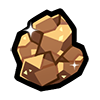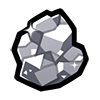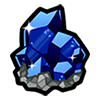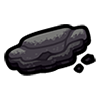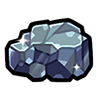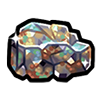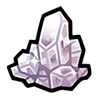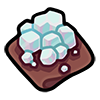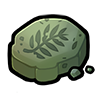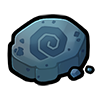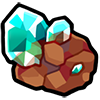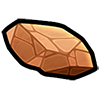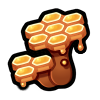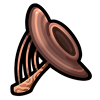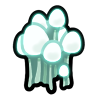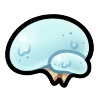Items
Copper Ore
While copper is found in many industrial applications, its unique properties makes it sought after for both art and medical applications.
Found by foraging.
Silver Ore
Silver is one of the most reflective materials known to science, this impeccable luster makes it a favorite for optical applications as well as cosmetic!
Found by foraging.
Lanthanide
A multitude of heavy metals. These are useful in making electrical components.
Found by foraging.
Carbonized Fossil
Acting almost like photo of the past, fossils form the basis of understanding these long lost organisms. From premineralization to carbonization, there are a myriad of ways in which fossils preserve these moments in time and biology.
Obtained by foraging.
Availability
Source:
Kubai Desert
Adpression Fossil
Acting almost like photo of the past, fossils form the basis of understanding these long lost organisms. From premineralization to carbonization, there are a myriad of ways in which fossils preserve these moments in time and biology.
Obtained by foraging.
Availability
Source:
Kubai Desert
Premineralized Fossil
Acting almost like photo of the past, fossils form the basis of understanding these long lost organisms. From premineralization to carbonization, there are a myriad of ways in which fossils preserve these moments in time and biology.
Obtained by foraging.
Availability
Source:
Kubai Desert
Skyfire Stone
Skyfire stone, natively known as Xhanevri, is considered invaluable to the Haddu. It has a special property of phosphorescence, meaning it glows after exposure to light. It’s often machined into prized ornamental pieces, such as jewelry.
Obtained by foraging.
Availability
Purchaseable At:
Amber Shelf
A slimy, waxy yet edible mushroom. Soft segments can be individually pulled off to be eaten or used in cooking.
Can be obtained by foraging.
Cambershroom
A melodious "singing" mushroom. Wind passes through the string-like veil and chamber, creating a flute-like whistle and spreading the mushroom's spores.
Can be obtained from foraging.
Jellystar Tremella
A gelatinous mushroom that grows in star-shaped clusters. Its quick growth rate and fruit-like flavor make it popular for cultivation.
Can be obtained from foraging.
Woodland Ghost
A spooky, bioluminescent mushroom that only appears for a short time. It grows rapidly and releases its spores all in one night, melting into gross black piles by morning light. Its elusive, disappearing nature has resulted in many ghost tales among young ones.
Can be obtained from foraging.
Seasalt Calvatia
A large, puffy mushroom that grows in the warm seas off the coast of Torini. Large specimens are highly sought after by mushroom foragers to turn into Seasalt Candy - dehydrated strips of the mushroom sprinkled with sugar, an airy salty-sweet treat reminiscent of cereal marshmallows.
Can be obtained by foraging.
